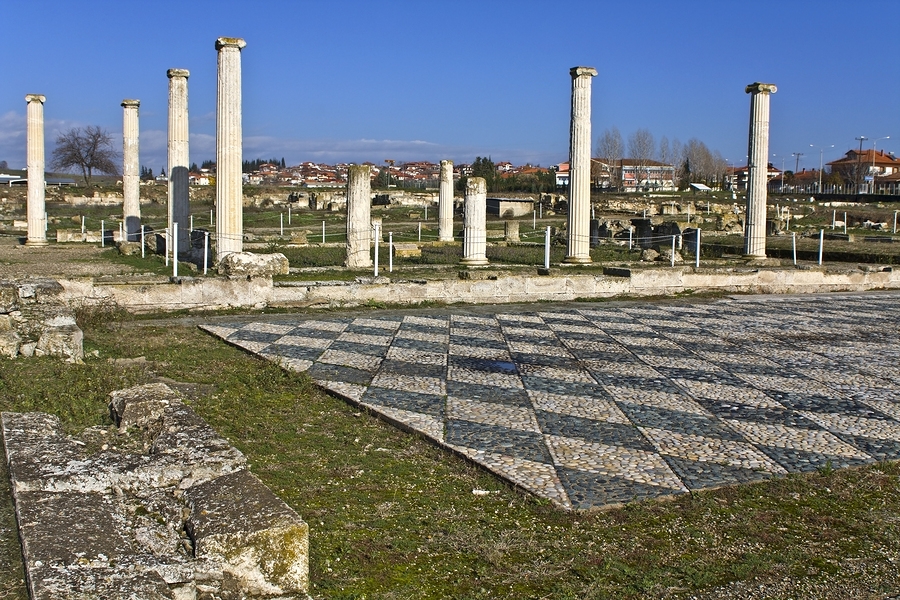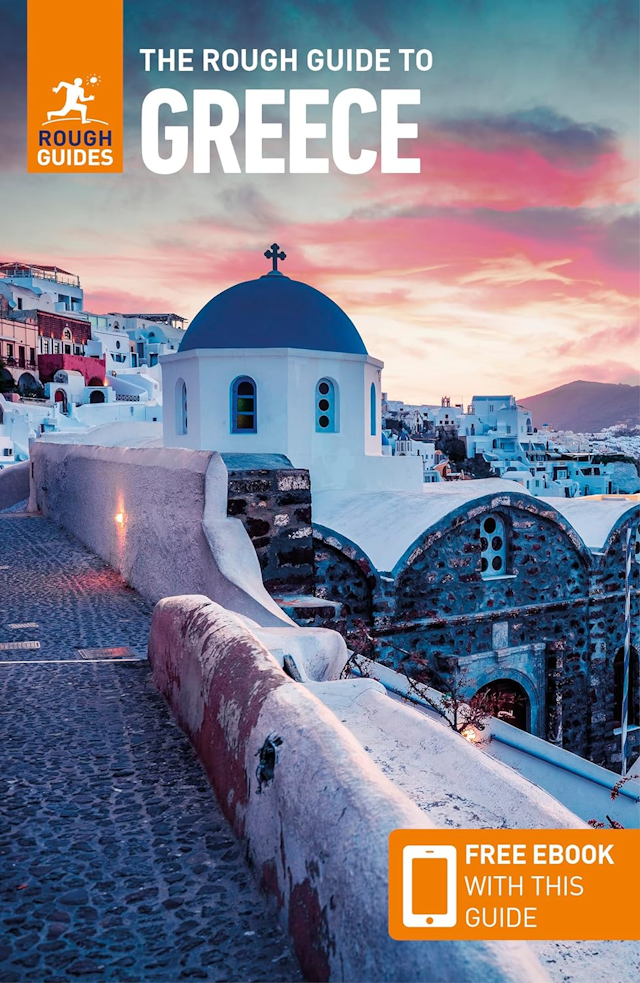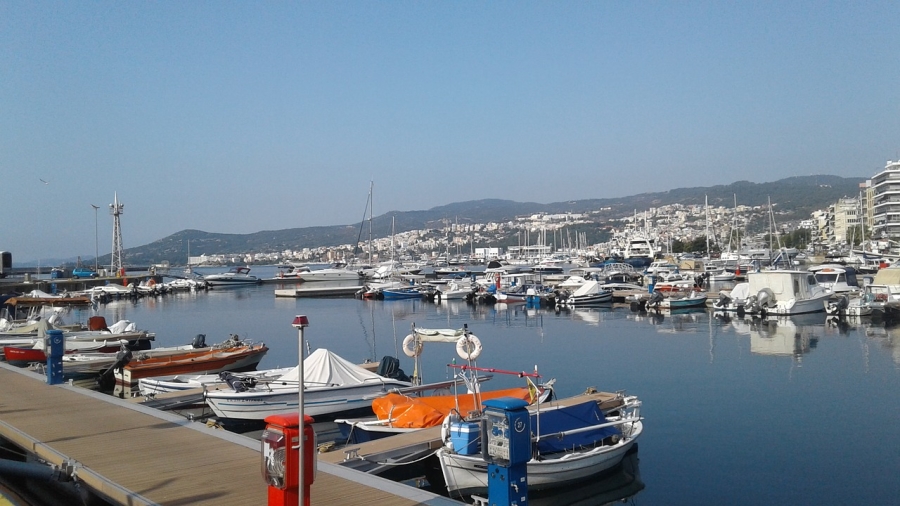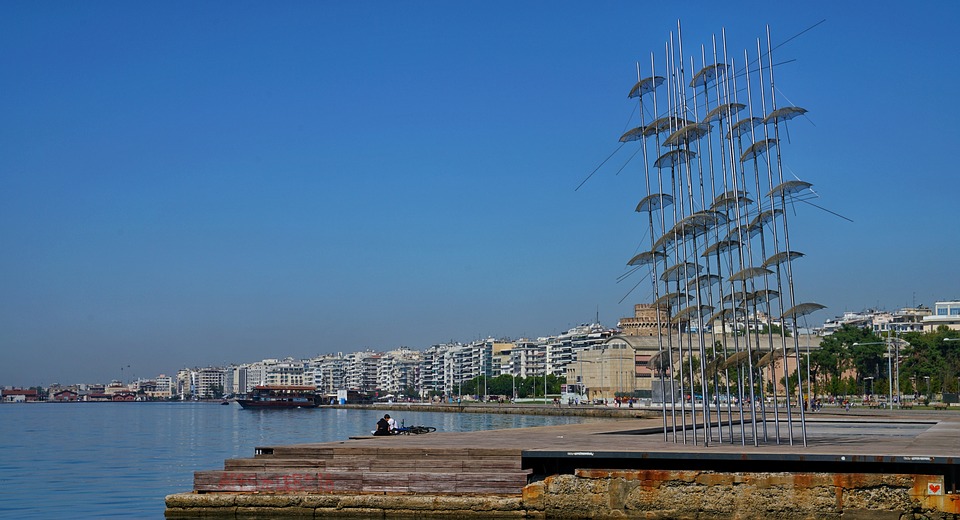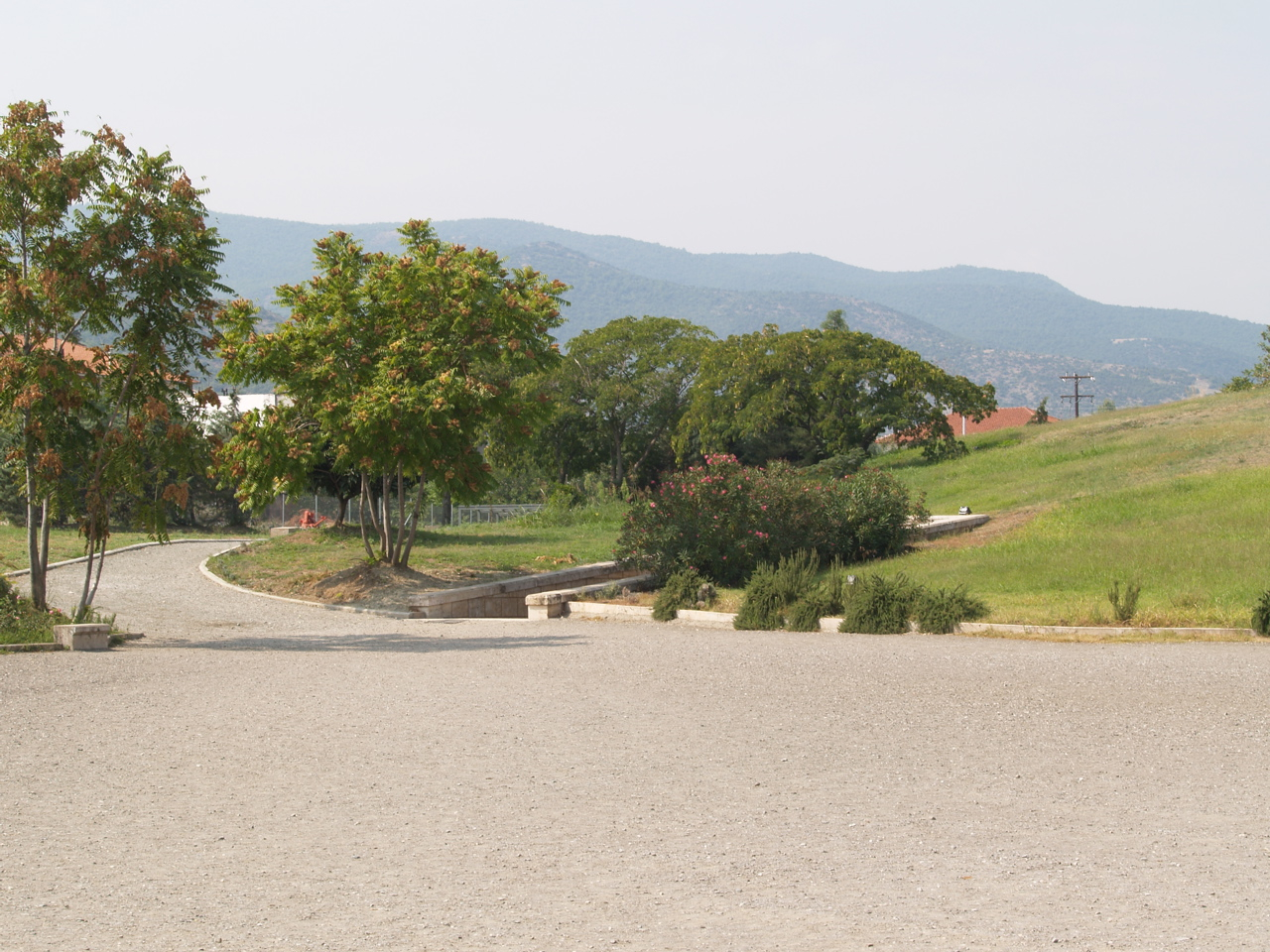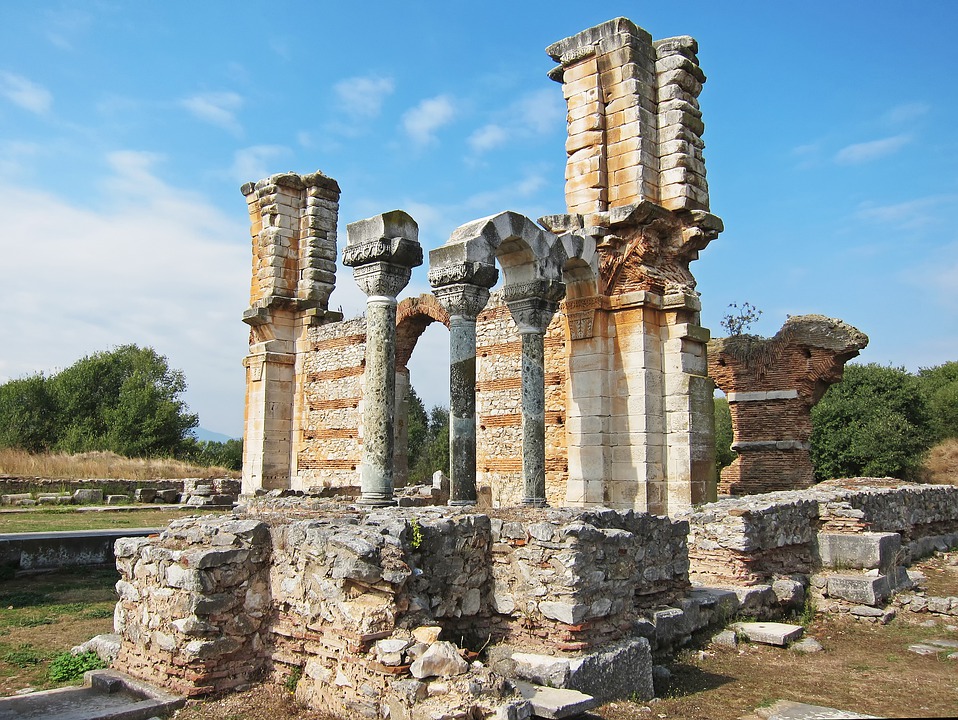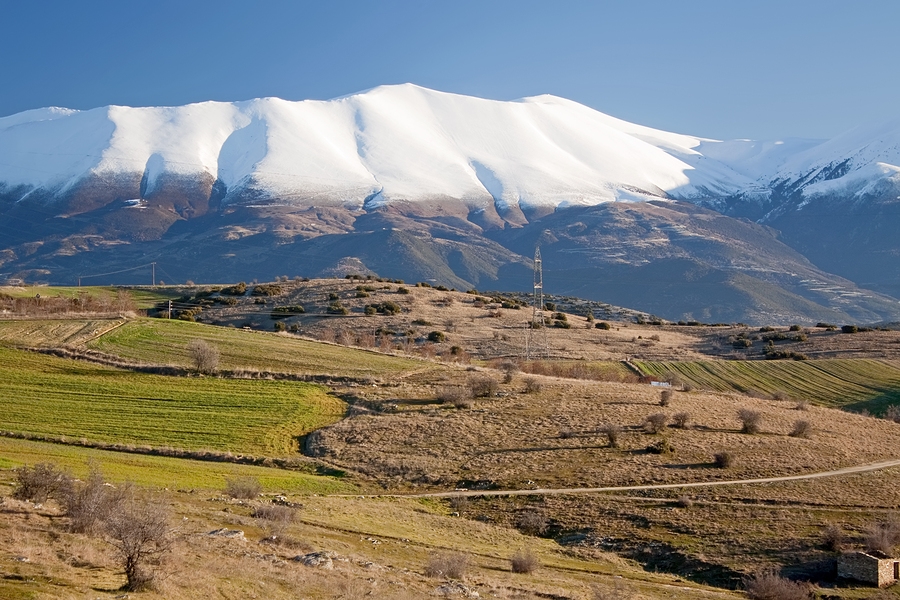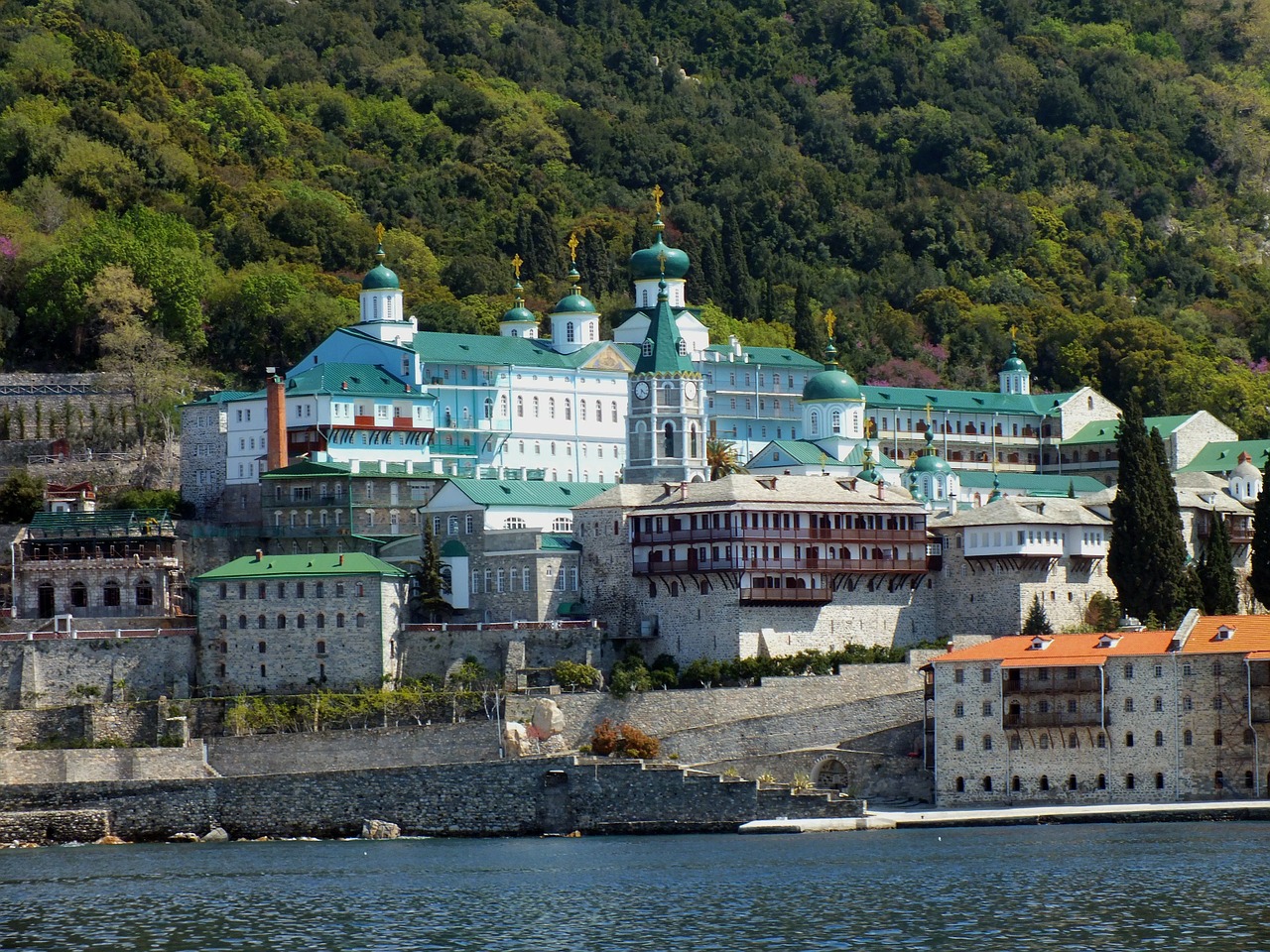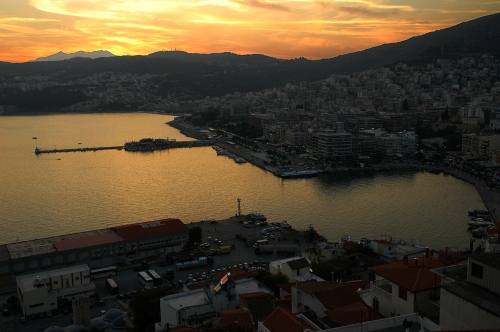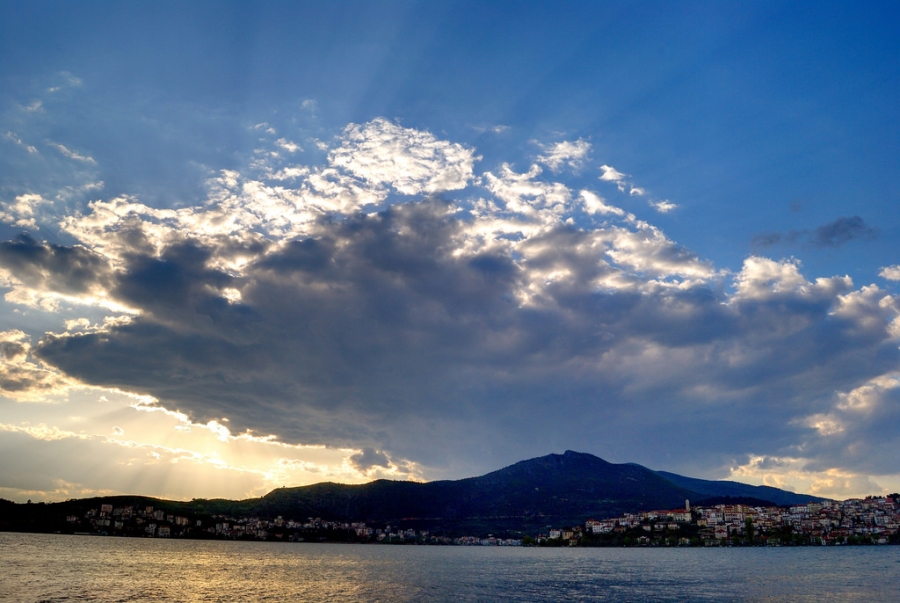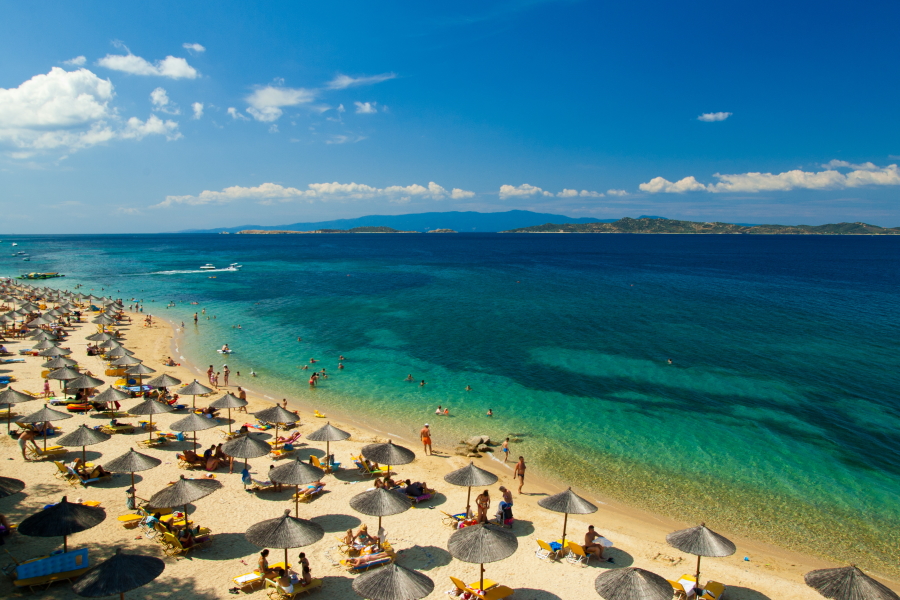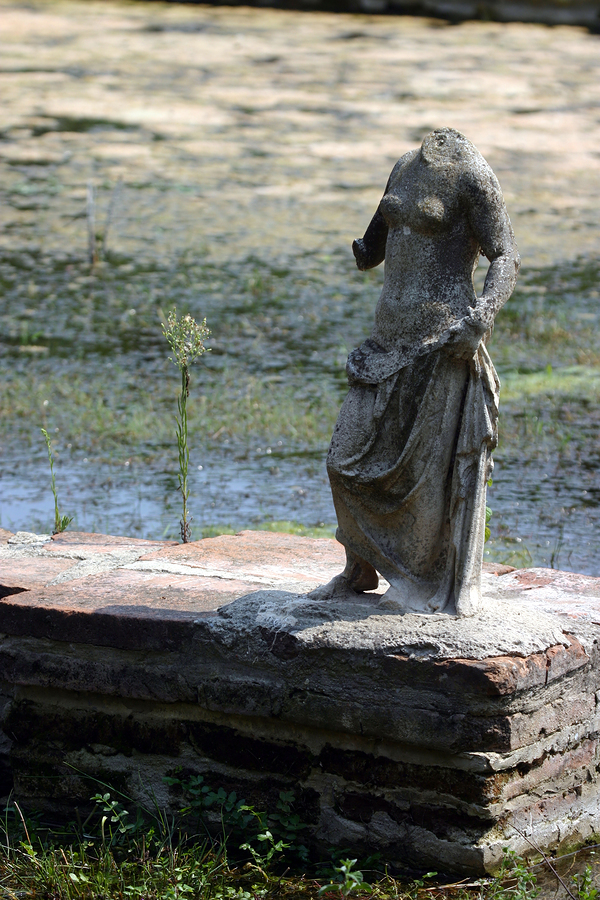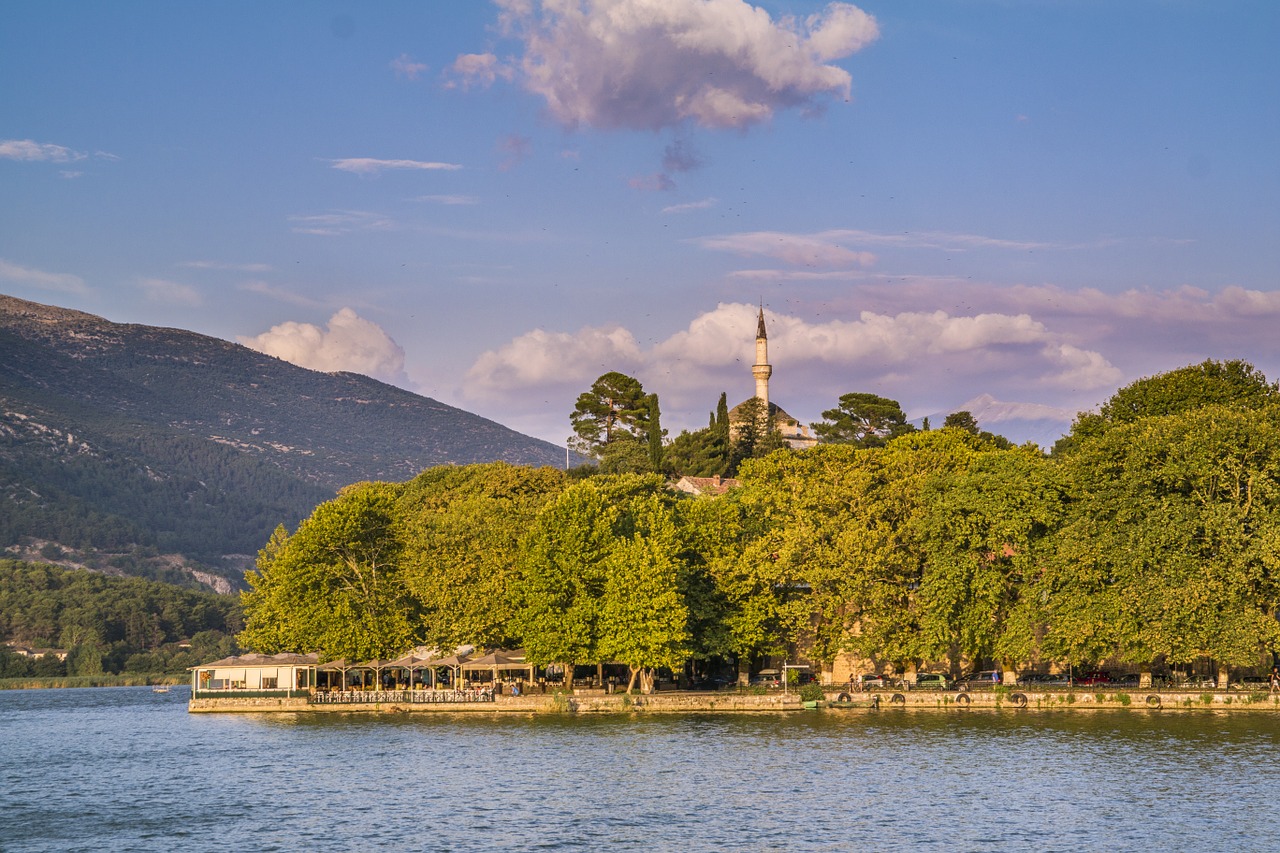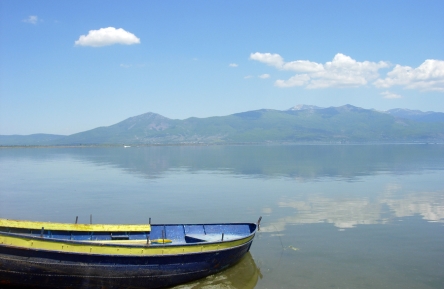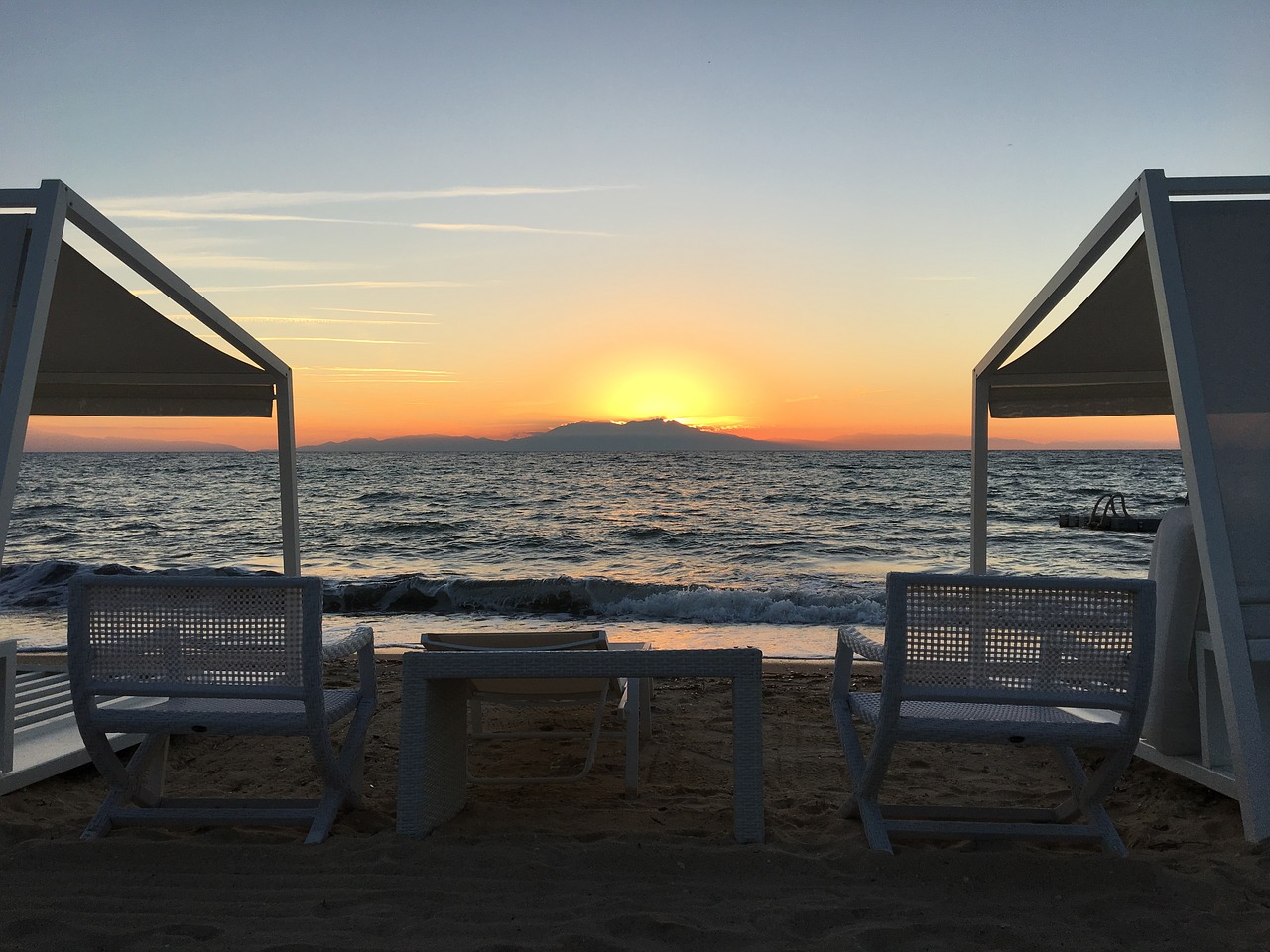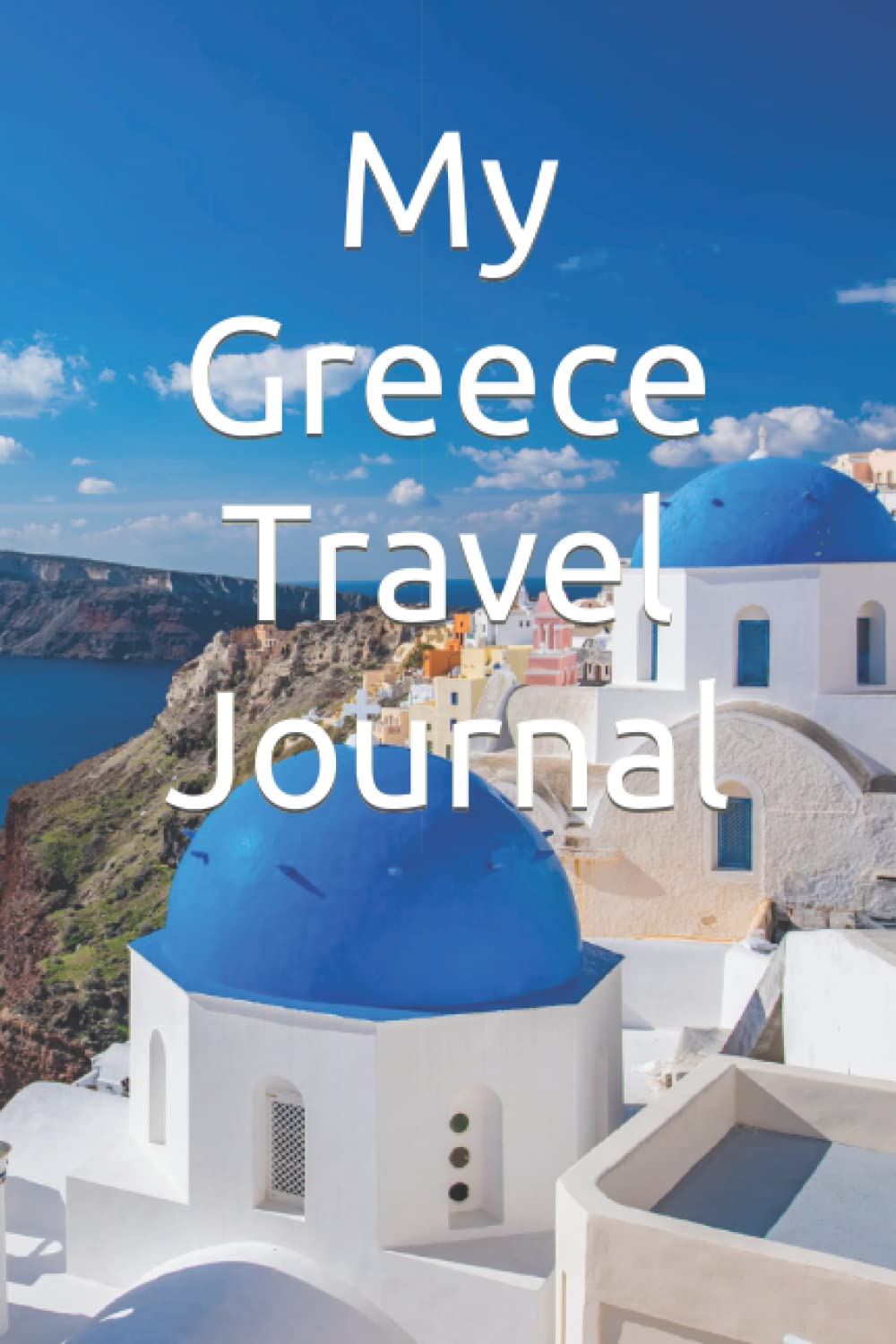- HOME
- Macedonia & Thrace
- Pella
Pella
Pella in Macedonia is famous for its mosaics and was also the birthplace of both King Philip II and his son, Alexander the Great.
Straddling the main road that runs from northwest Greece to Thessaloníki is the unassuming-looking site of Pella. As you approach, it is hard to believe how important this once was, but it was at one time the capital of Macedonia. More than that, it could be regarded as the first capital of the state that was recognisably modern Greece.
King Philip II
Pella was the capital of King Philip II of what was then called Macedon, and when Philip defeated the Greek armies in 338 BC he united under his banner for the first time the various city-states that until then had been almost constantly at war with each other, creating a union which covered much of what is now modern Greece.
Pella was not only the capital of King Philip II and his son, Alexander the Great, it is also where both of them were born.
Pella's Mosaics
More than for its historical significance, though, there is one over-riding reason for visiting Pella and that is to see the magnificent mosaics that have survived here. They are easily among the finest ever to have been discovered in Greece, and some are still in situ. These are naturally protected from the elements, and mostly date from about 300 BC, not long after the death of Alexander the Great.
In addition to their historical significance and huge scale, they are also exquisite works of art. Many of them depict hunting scenes, including naked hunters attacking a lion with clubs and swords, a deer being attacked by a griffin, the hunting of a stag and what is regarded as the finest mosaic of them all, the God Dionysos riding a panther.
The House of the Lion Hunt
Many of these are the floor mosaics in what is called the House of the Lion Hunt, which is thought to have been an official building of some kind. It had 12 rooms ranged around three open courtyards, and was some 90m long and 50m across.
There are the remains of more modest buildings around it on the site, from which a sense of the living city can be gained. Across the modern main road is the site museum, which contains several more mosaics that have been removed from the site, as well as statues, ceramics and other items found there.
Latest Posts
-
Kerameikos Ancient Site in Athens Getting New Visitor Facilities
Visitors to the Kerameikos archaeological site in central Athens will soon have new access through an entrance-exit point being developed on Agion Asomaton Street, directly across from Dipylou Street. -
Central Greece Motorway E65 Adding More Kilometers
A new section of the E65 motorway, often referred to as the “backbone road” of Central Greece, was opened to traffic in the second week of July, with 136 kilometers now operational. This road provides… -
AirDNA: Greece’s 3 Cities with Affordable Airbnb Rates
Iceland, Monaco, the UK, Greece, and Spain are Europe’s most expensive countries for short-term rentals, according to analytics experts AirDNA. -
Seaplane Test Flights Connect Skopelos, Alonissos, Skyros
Greek seaplane company Hellenic Seaplanes on Friday laid the groundwork for some of the Greek islands that will welcome seaplanes and carried out its first flights between three islands of the Sporade… -
Travel + Leisure: Four Greek Hotels Among Best in the World and Europe
The World’s Best Awards by Travel + Leisure recently ranked four Greek hotels among the best in the world and Europe, honoring them for their luxurious atmosphere and top-notch hospitality. -
Santorini Cannot Support Even One More Hotel or Airbnb Bed
Santorini is now coping with the repercussions of overtourism generated by cruise ships and day-trippers from Crete and other adjacent islands. -
9 Tasty Stops in the Cyclades for Authentic Flavors
Restaurants, tavernas, and grocery stores that highlight the local flavors of the Cyclades. -
Where to Eat on Symi
Greece Travel Secrets picks where to eat on Symi, down by the harbour or in the upper town, and whether you like fish, meat, vegetarian, traditional or modern. -
Restaurants with Acropolis Views
Greece Travel Secrets chooses its top ten Athens restaurants with Acropolis views, perfect for dining by day or by night, including places with Michelin stars. -
The Ilisian: Reimagining an Icon of Modern Athens
The former Hilton Athens is being transformed into a multi-faceted destination that aspires to forge exciting new connections between the Greek capital and the rest of the world.
